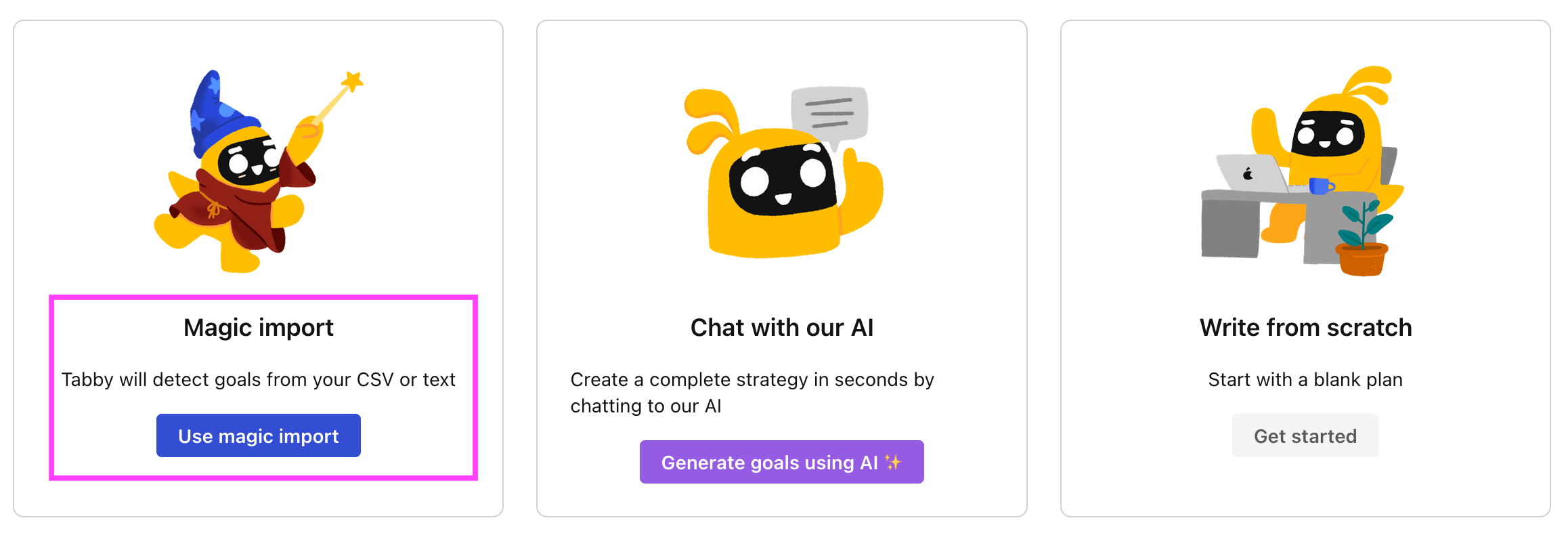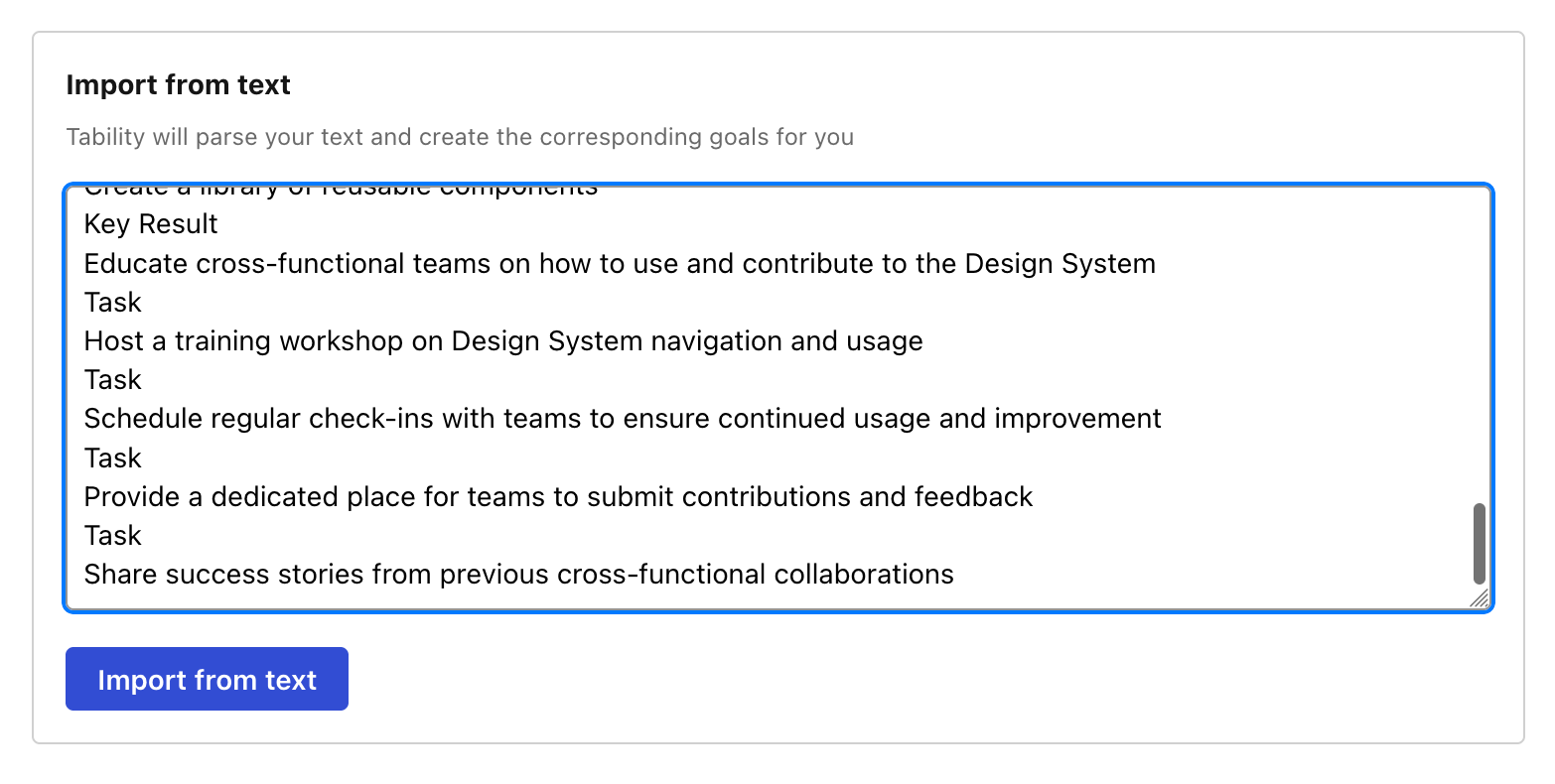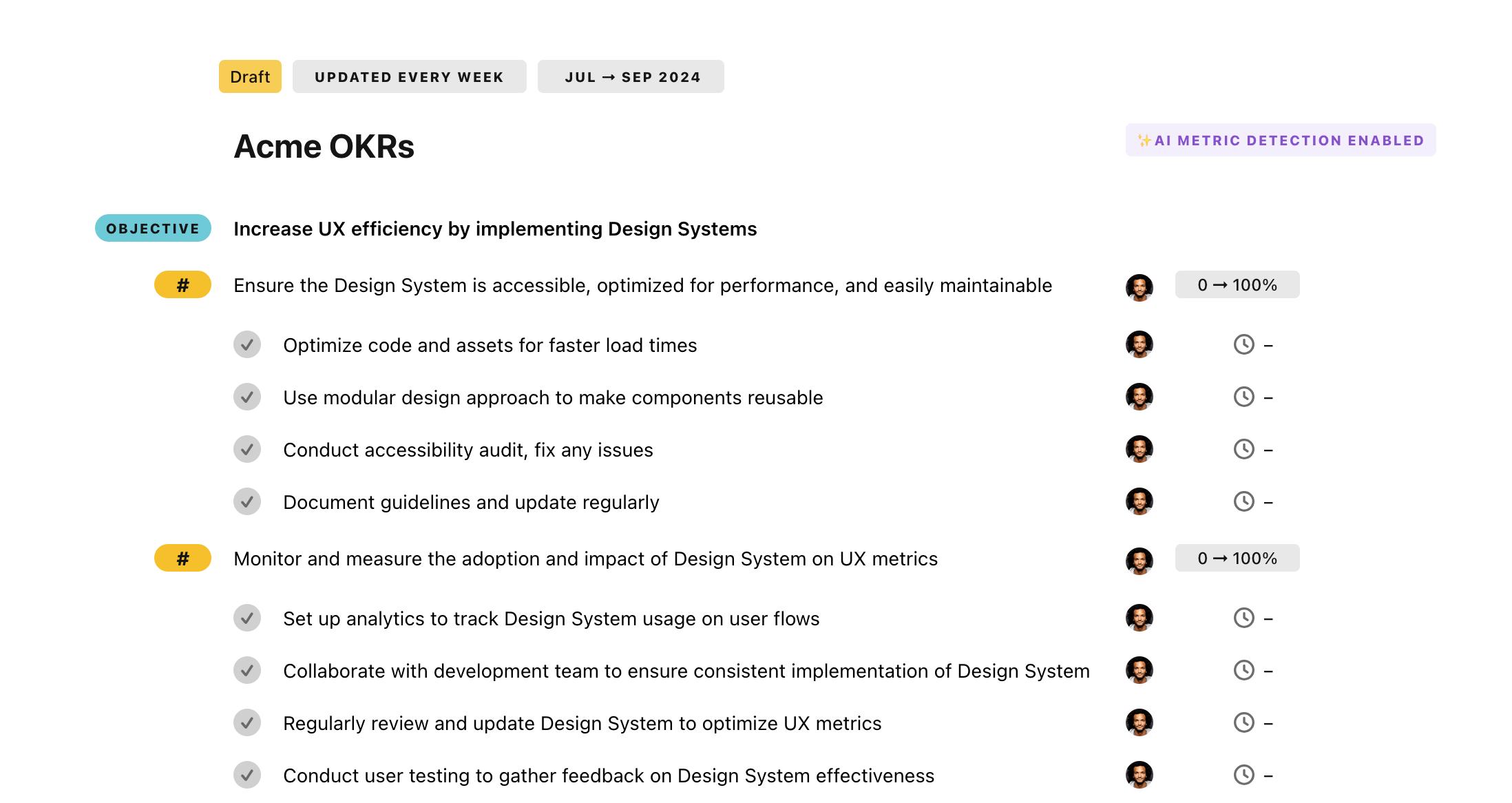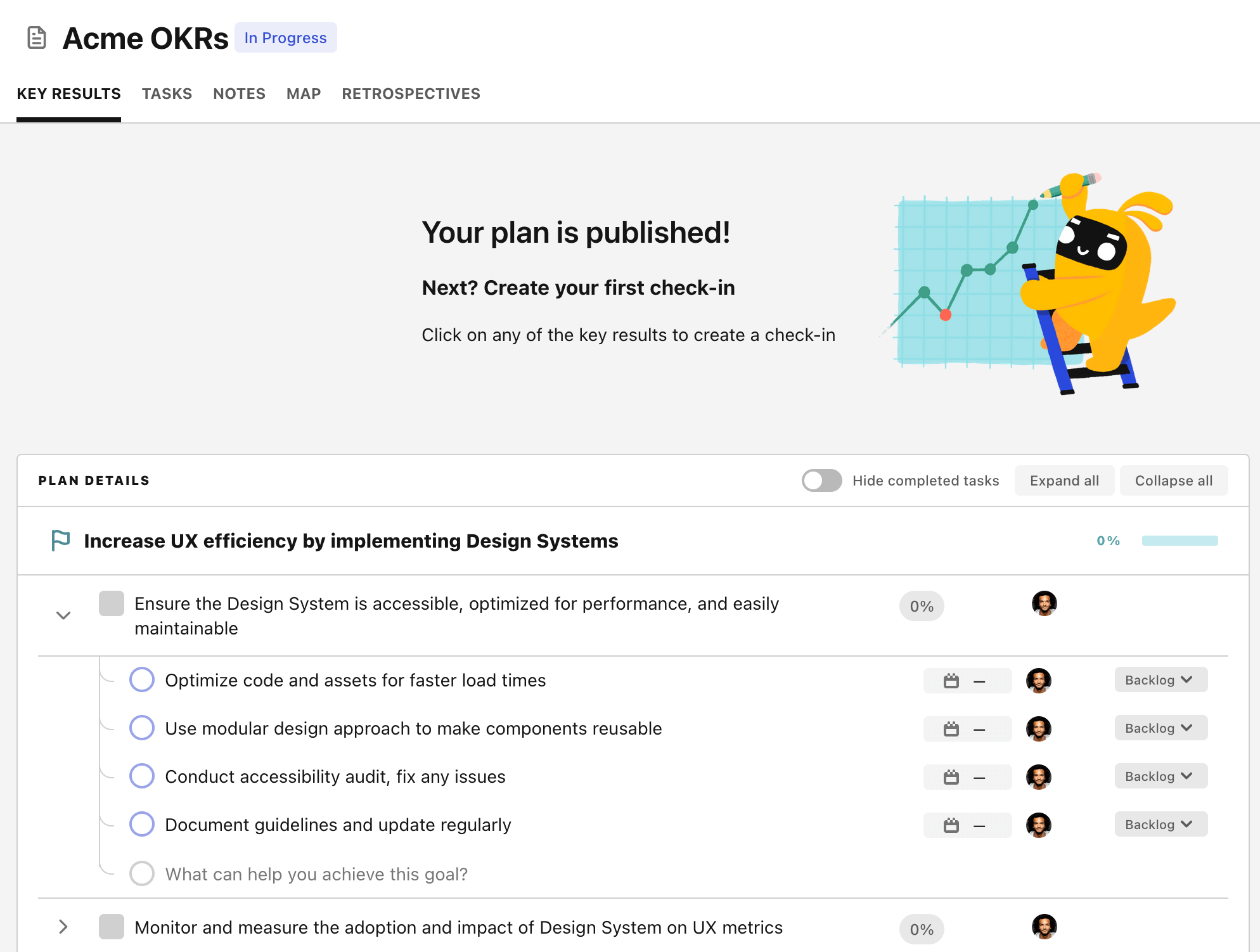OKR template to successfully understand and utilize "sdfsfs"
Your OKR template
The next objective revolves around applying this new knowledge to at least ten different projects. This will include identifying suitable projects, grasping the functionality of "sdfsfs", and integrating it into the chosen projects.
The final objective is to demonstrate mastered skills through a presentation to the team. This will entail creating a comprehensive presentation that delves into the progress made with "sdfsfs", scheduling a team meeting to deliver the presentation, and planning to answer any queries or provide further clarification.
This OKR encourages staff to constantly improve their skills and understanding of different tools, pushing them to demonstrate their progress and practically apply their knowledge, while simultaneously fostering team communication and support.
ObjectiveSuccessfully understand and utilize "sdfsfs"
KRComplete introductory training on "sdfsfs" with at least 90% proficiency
Score at least 90% on the final evaluation
Actively participate and study all training materials
Register for the introductory training on sdfsfs
KRSuccessfully apply "sdfsfs" to at least 10 different relevant projects
Start applying sdfsfs to chosen projects
Learn and comprehend the functionality of sdfsfs
Identify 10 relevant projects for sdfsfs application
KRShowcase "sdfsfs" skills improvement through a demonstrative presentation to the team
Plan to answer questions and provide further clarification on improvements
Create a comprehensive presentation detailing sdfsfs skills progress
Schedule a team meeting for the demonstrative presentation
How to edit and track OKRs with Tability
You'll probably want to edit the examples in this post, and Tability is the perfect tool for it.
Tability is an AI-powered platform that helps teams set better goals, monitor execution, and get help to achieve their objectives faster.
With Tability you can:
- Use AI to draft a complete set of OKRs in seconds
- Connect your OKRs and team goals to your project
- Automate reporting with integrations and built-in dashboard
Instead of having to copy the content of the OKR examples in a doc or spreadsheet, you can use Tability’s magic importer to start using any of the examples in this page.
The import process can be done in seconds, allowing you to edit OKRs directly in a platform that knows how to manage and track goals.
Step 1. Sign up for a free Tability account
Go tohttps://tability.app/signup and create your account (it's free!)
Step 2. Create a plan
Follow the steps after your onboarding to create your first plan, you should get to a page that looks like the picture below.

Step 3. Use the magic importer
Click on Use magic import to open up the Magic Import modal.
Now, go back to the OKR examples, and click on Copy on the example that you’d like to use.

Paste the content in the text import section. Don’t worry about the formatting, Tability’s AI will be able to parse it!

Now, just click on Import from text and let the magic happen.

Once your example is in the plan editor, you will be able to:
- Edit the objectives, key results, and tasks
- Click on the target 0 → 100% to set better target
- Use the tips and the AI to refine your goals
Step 4. Publish your plan
Once you’re done editing, you can publish your plan to switch to the goal-tracking mode.

From there you will have access to all the features that will help you and your team save hours with OKR reporting.
- 10+ built-in dashboards to visualise progress on your goals
- Weekly reminders, data connectors, and smart notifications
- 9 views to map OKRs to strategic projects
- Strategy map to align teams at scale